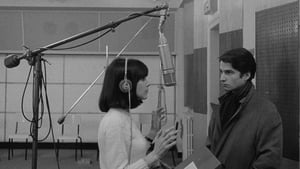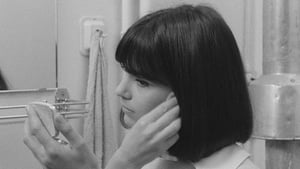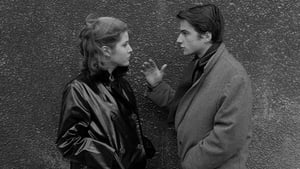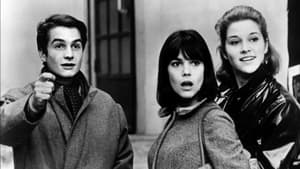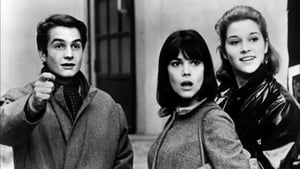Video Sources 0 Views
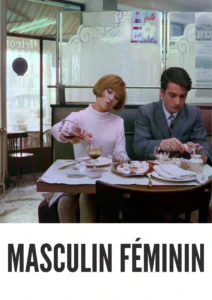
Synopsis

Step back into the heart of 1960s Paris with Jean-Luc Godard’s iconic film, Masculin Féminin, now beautifully colorized to bring a fresh perspective to this French New Wave masterpiece. Starring Jean-Pierre Léaud and Chantal Goya, the film offers a compelling snapshot of a generation grappling with love, politics, and identity against the backdrop of a rapidly changing world. Perfect for cinephiles and those interested in the cultural shifts of the 1960s, this HD download presents a visually enhanced way to experience a landmark film.
Masculin Féminin follows Paul, a young man recently discharged from military service, as he navigates the complexities of love and life in Paris. He becomes involved with Madeleine Zimmer, a budding pop singer, and their relationship becomes a focal point for exploring the broader themes of the film.
As Paul and Madeleine’s romance unfolds, the film delves into the social and political issues that defined the era. Paul, an idealist with communist leanings, grapples with questions of alienation, exploitation, and the Vietnam War. Madeleine, on the other hand, is more focused on her music career and personal relationships. Their differing perspectives highlight the tensions and contradictions within the youth culture of the time.
The film also introduces a cast of supporting characters, including Madeleine’s roommates, Elisabeth and Catherine, and Paul’s friend Robert, a fellow activist. Through a series of vérité-style interviews and fragmented scenes, Godard captures the essence of a generation searching for meaning and purpose in a world on the cusp of change. Masculin Féminin offers a thought-provoking and visually engaging look at the lives and struggles of young people in 1960s France.
The film features a talented cast who bring these complex characters to life:
-
Jean-Pierre Léaud as Paul
-
Chantal Goya as Madeleine Zimmer
-
Marlène Jobert as Elisabeth Choquet
-
Catherine-Isabelle Duport as Catherine-Isabelle
-
Michel Debord as Robert Packard
Masculin Féminin falls squarely within the French New Wave genre, characterized by its innovative filmmaking techniques, existential themes, and focus on contemporary social issues. It is a drama with strong elements of romance and political commentary.
Released in 1966, Masculin Féminin is a quintessential example of the French New Wave cinema movement. This period in filmmaking was marked by a rejection of traditional cinematic conventions and a focus on personal expression and social realism. Set against the backdrop of 1960s Paris, the film captures the spirit of a generation coming of age in a time of political upheaval and cultural transformation. The influence of figures like Bob Dylan and the ongoing Vietnam War are palpable throughout the film, reflecting the concerns and anxieties of young people in France and around the world.
This colorized version of Masculin Féminin has been carefully restored using modern digital techniques, providing a new visual dimension to Godard’s classic film. The colorization process involved meticulous attention to detail, enhancing the visual appeal while preserving the film’s original atmosphere and artistic intent. This enhanced viewing experience allows modern audiences to connect with the characters and themes of the film in a fresh and engaging way. While debates around colorizing black and white films continue, this version aims to introduce Masculin Féminin to a wider audience, ensuring its legacy for future generations.
-
: Jean-Luc Godard
-
: Jean-Luc Godard
-
: France, Sweden
-
: 1 hour 50 minutes
-
: MP4
-
: HD (1080p)
-
: Compatible with most devices, including smartphones, tablets, computers, and smart TVs.
Masculin Féminin (1966) remains a highly regarded and influential film, celebrated for its innovative filmmaking techniques and its insightful portrayal of youth culture in 1960s Paris. It is considered a key work in Jean-Luc Godard’s filmography and a landmark of the French New Wave movement.
-
: What is Masculin Féminin about?
-
A: Masculin Féminin is a film about the lives and relationships of young people in 1960s Paris, exploring themes of love, politics, and identity.
-
-
: Is Masculin Féminin (1966) a well-known film?
-
A: Yes, Masculin Féminin is a highly regarded film and a key work in the French New Wave movement.
-
-
: Is this version of Masculin Féminin colorized?
-
A: Yes, this version has been professionally colorized to enhance the viewing experience.
-
-
: What makes Masculin Féminin interesting for classic film fans?
-
A: Masculin Féminin offers a unique glimpse into the youth culture of 1960s Paris and showcases the innovative filmmaking techniques of Jean-Luc Godard.
-
-
: What is the download format?
-
A: The download format is MP4, which is compatible with most devices.
-
-
: What resolution is the download?
-
A: The resolution is HD (1080p), providing a high-quality viewing experience.
-
Watch Masculin Féminin Today!

